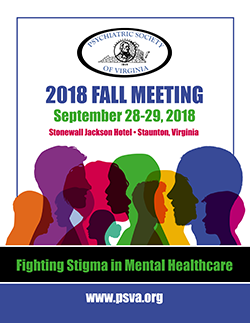Summer 2018 Issue |
|
In the News
Trichotillomania Disorder
By Joshua Dellinger, MS1
Stephanie Peglow, DO, MPH
Trichotillomania (TTM) is a psychiatric disorder characterized by recurrent pulling out of one’s hair, resulting in significant distress and functional impairment. A key feature and diagnostic criteria of this disorder is that the hair-pulling cannot be sufficiently explained by another mental disorder, and TTM is categorized in the DSM-V as an obsessive-compulsive disorder separate and distinct from body dysmorphic disorder. Importantly, TTM hair-pulling is not consistent with an impulse to cleanse, self-harm, or tactile or visual hallucinations, nor is the alopecic state perceived as desirable. Rather, as with other related disorders of pathologic grooming (e.g., dermatillomania, or skin-picking disorder, with which TTM displays comorbidity), the patient exhibits an intense sensory urge of tension or distress that is rapidly transferred into the urge to pull the hair, a behavior which results in subjective easing of this distress.
Several assessments exist for determining the severity of TTM, divided between adult-specific and child-specific pathology forms, including: the Psychiatric Institute Trichotillomania Scale, the Massachusetts General Hospital Hairpulling Scale, the Trichotillomania Scale for Children, and the Milwaukee Inventory for Styles of Trichotillomania – Child Version. At the time of this writing, treatment guidelines are in dispute, with such frequently-used clinical point-of-care references as UpToDate counseling cognitive behavioral therapy over pharmacology. While psychotherapy of nearly any modality can foster insight, motivation and reframing techniques, and is therefore an indispensable tool in the management of TTM, the underlying sensory element of the distress-and-response dynamic seen in TTM is deserving of alleviation, if possible.
Conventional psychopharmacology approaches in treating TTM have displayed only modest success, and no current FDA-approved pharmacological recommendations exist for TTM. A 2007 meta-analysis revealed that the selective serotonin reuptake inhibitor fluoxetine fails to show improved efficacy when compared to placebo, and while the tricyclic antidepressant clomipramine has displayed symptom reduction over that of placebo, this effect has not been statistically significant (Block, et al., 2007). Additionally, the adverse effect profile of clomipramine is formidable, resulting in a dropout rate of up to 30% in some studies. More recently, the N-acetyl derivative of L-cysteine, N-acetylcysteine (NAC), has emerged as a potential treatment for TTM. Available widely as an over-the-counter nutritional supplement, NAC neatly avoids obstacles to patient access due to clinic or pharmacy logistics.
Neuropharmacological mechanisms of action of NAC are manifold, and will be explored in a later publication. At present, NAC is theorized to exert its desired effects via a therapeutic combination of glutamate modulation, restoration of glutathione and mitochondrial repair (Berk, Malhi, Gray, & Dean, 2013). Regardless of mechanistic elucidation, preliminary clinical results indicating NAC treatment in TTM are encouraging. A 2009 double-blind, placebo-controlled study comprising fifty randomized TTM patients showed a 40.9% mean reduction of symptoms in 56% of NAC-treated subjects, with significant improvement beginning at nine weeks of treatment (Grant, Odlaug, & Kim, 2009). These results – obtained purely from NAC administration – rival that of cognitive-behavioral therapy, which has shown a 34.8% - 66.4% reduction in TTM symptoms. Given the wide availability, negligible drop-out rate, and significant efficacy, future clinical guidelines may include NAC (in conjunction with cognitive-behavioral therapy) as front-line treatment for this hitherto elusive disorder.
References:
Berk, M., Malhi, G. S., Gray, L. J., & Dean, O. M. (2013, March). The promise of N-acetylcysteine in neuropsychiatry. Trends in Pharmacological Sciences, 167-177.
Block, M., Landeros-Weisenberger, A., Dombrowski, P., Kelmendi, B., Wegner, R., Nudel, J., . . . Cloric, V. (2007, October). Systematic review: pharmacoliogical and behavioral treatment for trichotillomania. Biological Psychiatry, 839-846.
Grant, J. E., Odlaug, B. L., & Kim, S. W. (2009, July). N-acetylcysteine, a glutamate modulator, in the treatment of trichotillomania. Archives of General Psychiatry, 756-763.
YOUR NEWSLETTER IS NOW AVAILABLE ON YOUR SMARTPHONE AND TABLET!
JOIN PSV TODAY!
REGISTER TODAY!
PSV 2018
FALL MEETING
September 28-29, 2018
Stonewall Jackson Hotel
Staunton, Virginia
APA Find a Psychiatrist
Are you accepting new patients?
Opt into APA’s “Find A Psychiatrist” database. To view the functionality or opt-in, CLICK HERE
FYI: A link for this option has been added to the PSV websiteSelect the “About” button and then “Find a Psychiatrist” from the drop down.






